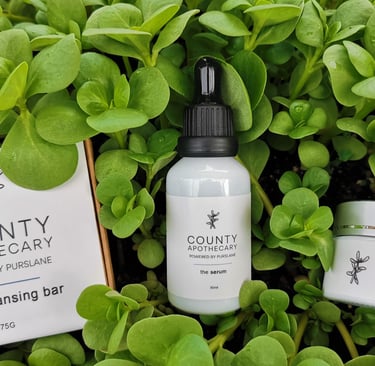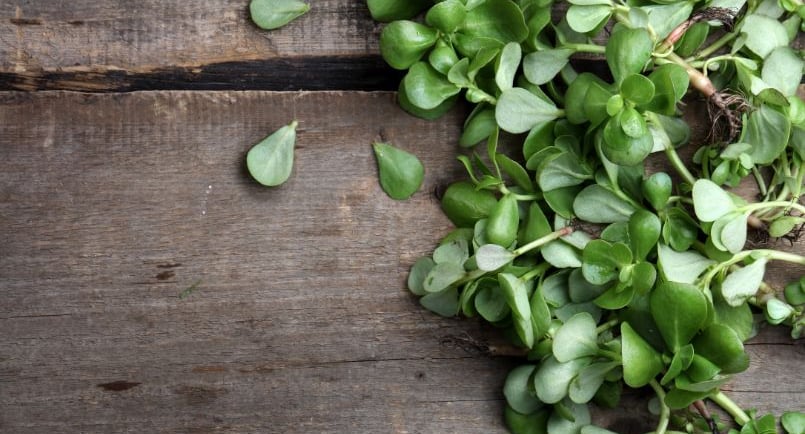Discovering Purslane
C. Dickinson
3/16/20243 min read


C. Dickinson / September 15, 2022
In late 2019, we came across information about a plant that claimed to be one of the most nutritional plants on earth. We had never heard of it before...
Once we discovered this humble yet mighty plant, it began to appear everywhere around us.
Purslane (portulaca oleracea) is a prolific, drought resistant plant that despite being classified as a weed is in fact, one of the most nutrient rich plants on earth.
Purslane has been cultivated for over 4000 years, used both medicinally and nutritionally. Although it is a common ingredient for dishes in some parts of the world, it seems to be relatively unknown here in Canada.
Purslane is low in calories and fats.
It is rich in dietary fibres, vitamins, minerals, magnesium, calcium, potassium, folate, lithium, riboflavin, niacin, pyridoxine, carotenoid and iron. It has vitamins A, B, C, six times more E than spinach, seven times more beta carotene than carrot, 10 times more melatonin than any other fruit or vegetable tested, more omega-3 fatty acids than any other leafy plant known on earth and probably more than most fish oils - Wow!
When we considered how outstanding this plant is - we wondered - how on earth has it been overlooked?
Research consistently shows this plant has remarkable benefits for the skin and body, showing clearly that this miracle plant should be a part of our everyday lives.
We knew that purslane offered many benefits for skin. So we researched the marketplace and found no natural skin care products with purslane. More research and then we created the products we wanted for ourselves but could not find. Ones that can soothe, nourish, hydrate and protect skin. Simple, natural products that are efficient and safe for all.
Then we sourced fresh and dried purslane for its delicious taste and nutritional benefits. It became a staple in our kitchen.
We found a Canadian company that offered both ‘Green’ and ‘Golden’ cultivated varieties. The advantage of these over wild purslane is that the plants grow more vertically and produce larger and wider leaves than wild purslane does. The entire plant is edible- the stalks, leaves, seeds and the flowers.
When purslane plants are bursting in the garden, we can’t pick it fast enough for daily salads. It is easy to grow and proved to be a delicious favourite as we experimented with salads, pesto, pickles and more.
Harvesting and drying purslane is a great way to preserve and enjoy purslane when it is no longer in season. We have also been able to source both dried purslane and purslane extract powder, which enabled us to continue to experiment all winter as well.
Cooking with dried purslane is as easy as adding some to your favorite dishes or substituting it for lettuces . Try it in salads, soups, stews, smoothies, pot roasts and more.
Any liquid infused with herbs can be an infusion from teas to tinctures. Purslane tea is delicate and delicious. We enjoy it hot – plain or with honey or lemon and always keep a jug of brewed tea in the fridge for refreshing iced tea. We have carbonated it as well, which makes a nice addition to drinks and cocktails. We also have made a simple syrup infused with purslane – it adds a nice earthy, flavour to cocktails and foods.
When cooking with purslane, or other vegetables, nutrients can escape in two ways: by getting dissolved in the cooking water or by getting destroyed by heat. Water-soluble compounds (which include vitamin C and some B vitamins) are he most vulnerable from boiling, simmering steaming or braising. Boiling will reduce the vitamin C content by about 50%, and B vitamins by about 30% , according to studies.
For minerals the loss is only in the range of 5 to 10 percent no matter how the vegetable is cooked. Cooking has little detrimental effect on the nutritional value of carotenoids which are the precursors to vitamin A. (beta carotene is one example). Studies suggest that cooking may even boost this nutrient in some cases.
So, although cooking will reduce the nutritional profile, there are still an abundance of nutritional benefits of cooking and eating purslane.
Another way for us to use dried purslane is to infuse canola oil with it. The purslane infusion added an earthy touch to the flavor and some added nutritional benefits.
Purslane is proving to be a wonderful and surprising addition to our never ending culinary adventures.
Here at County Apothecary, we eagerly wait for the return of the hot summer days when we will again be harvesting this ‘Superfood’ from our garden and creating new ways to enjoy purslane.







